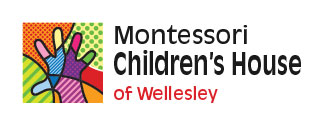Montessori 101
Montessori is a model or style of education named after its creator, Maria Montessori. Montessori schools simply are schools that use the equipment, teaching approach and classroom structure Dr. Montessori first wrote of more than 100 years ago.
We are independent schools. There is no single governing association to which all Montessori schools belong. No single set of rules that all must follow. Montessori schools are not franchises or branches of a larger organization. No two Montessori schools are exactly alike.
There are, however, a set of critically important features that characterize all quality Montessori programs. The following is a brief overview. For a more detailed description of the Montessori Method, read Montessori Basics.pdf
Features of Quality Montessori Programs
1) Montessori schools follow the philosophy and tenets of child development articulated by Maria Montessori. While this is the topic of entire books, the basic concepts can be stated as follows:
From birth to age 6, children learn in a highly unique way that’s very different from the way adults learn. They effortlessly “absorb” information through experiences.
Their “absorbent minds” naturally incorporate experiences directly into their character and personality for life.
During this important period of life, children have natural inner directives that guide normal development. They inherently know what they need to learn and when they are ready to learn.
Young children have a love of order and purposeful “work.” They naturally want to be independent and competent contributors.
Very young children develop best when given freedom of choice within a structured, prepared environment that allows them to follow their inner learning directives.
From birth to age six, children learn primarily through their senses. They are naturally wired to acquire language and develop basic mental ordering.
2) Children learn in a mixed-age environment representing a 3-year age spread.
3) Programs are lead by Montessori certified teachers.
4) Classrooms are child-centered, not teacher-centered. Emphasis is on individual learning, not group learning.
5) Teachers play a background role: they work carefully to create a well prepared environment, facilitate access to materials, and record observations about each child’s development.
6) Montessori schools provide children with a full range of proven, tested materials in four primary areas: language, math, practical life and sensorial development. There is also emphasis on world cultures, geography, science, nature and critical social skills.
7) Classrooms are clean, uncluttered and well-organized. Children have easy access to materials.
8) Classrooms are filled with happy, kind children who are busily engaged in self-chosen activities. Classrooms are generally calm and peaceful.



